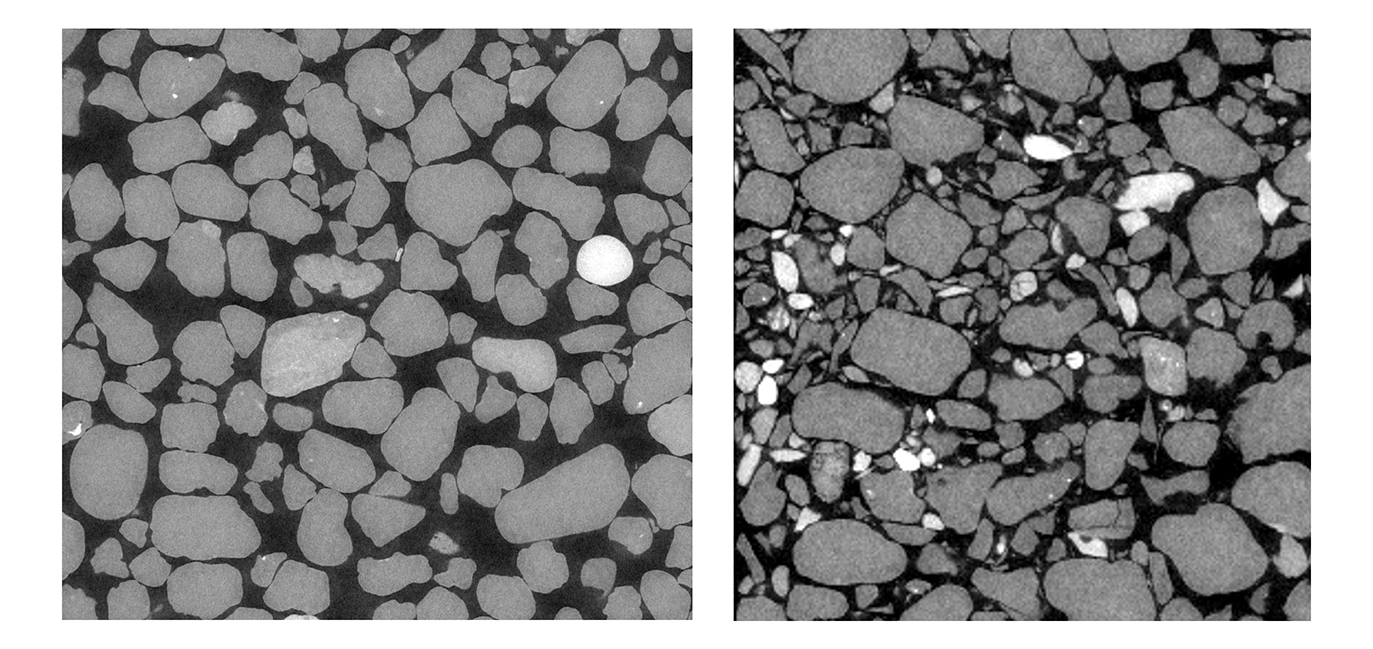Loose sand is a member of an extensive family of particulate materials. It is arguably one of the basic and simple geological system, yet it exhibits a wide spectrum of mechanical behaviours, including elastic behaviour during seismic wave propagation, plastic during short- and long-term loading, and flow on the earth surface and in engineering applications in the subsurface.
The elastic properties of unconsolidated sand are of interest in seismic-driven subsurface characterization, including static corrections. The latter is especially relevant in the Kingdom of Saudi Arabia, as well as other Middle Eastern and African provinces, where enormous hydrocarbon deposits are covered by thick layers of dune and desert sand. The deformational behavior and failure of sand is important in engineering applications, including where it is used as a proppant in hydraulic fractures.
A team led by Dr. Jack Dvorkin at Center for Integrative Petroleum Research (CIPR), CPG, has conducted an extensive experimental and theoretical study on sand collected at a coastal dune near KFUPM. The P- and S-wave velocities, as well as volume deformation, were measured in the lab on dry sand samples in the confining stress range from zero to 50 MPa. We discovered that many sand grains shattered as the stress increased.

2D slices of 3D CT-scan images of a limb sample before (left) and after (right) loading, the latter showing shattered grains.
The experiments included several loading and unloading cycles. All samples exhibited irreversible deformation and porosity reduction during the tests due to grain repacking in low-stress regimes and grain breakage at higher stress. The loading behavior was plastic, while the unloading/reloading behavior was elastic. In spite of noticeable porosity variations during the experiments, the elastic-wave velocities mainly depended on the stress rather than on porosity.
Our results were matched by the contact Hertz-Mindlin theory. We also offered a new theoretical model for the static bulk modulus measured in these experiments. This model is based on the concept of stress heterogeneity (stress chains or patches) in a granular pack and uses elastic bound averaging of the respective moduli of stressed and unstressed parts of the pack. The same model is used to describe the velocity versus stress behavior. These results and theory are the first ever generated in Saudi Arabia on local sand samples.

Porosity versus confining stress in three dune sand samples. The datapoints are color-coded by Vp measured during deformation. Colorbar in the middle refers to all three plots.

Velocity versus stress for the crest, limb, and base samples, color-coded by porosity. Circles are for dune crest; squares are for dune limb; and diamonds are for dune base samples. The curves are from theoretical contact-theory models.
In a series of additional experiments, sand and glass bead samples were monotonically loaded from zero to 50 MPa and then monotonically unloaded, all under hydrostatic stress conditions. Sand deformed irreversibly and its porosity loss was permanent. In contrast, the glass beads deformation was almost fully reversible with the initial porosity recovered. During loading, the static bulk modulus in all sand samples increased from zero to about 0.5 GPa between zero and 15 MPa stress and remained constant for the remainder of the loading. Such behavior, somewhat unexpected in a granular system, means that sand deforms as a linear elastic body during loading from 15 to 50 MPa. The unloading behavior was very different -- the static bulk modulus almost linearly decreased from about 4 GPa at 50 MPa to zero as the stress was reduced.
Once again, this behavior was very different from that observed in glass beads, where the static bulk modulus during loading was essentially the same as during unloading and appeared to be a unique function of stress, independent of the direction of its variation. Moreover, the static and dynamic bulk moduli in glass beads, the latter computed from , , and density measured during the loading/unloading cycle, were very close to each other. In contrast, the dynamic bulk modulus in dry sand exceeded the static modulus during unloading by a factor of 1.5 to 2.0. Once again, we used a quantitative theory based on contact mechanics and the concept of stress heterogeneity in particulates to analytically match the observed results.

Dune crest sand. Volumetric deformation (a); porosity (b); and static and dynamic bulk moduli (c) versus stress. The static modulus is color-coded by time with dark to light blue for loading and light blue to red for unloading.

Glass beads. Volumetric deformation (a); porosity (b); and static and dynamic bulk moduli (c) versus stress. The static modulus is color-coded by time with dark to light blue for loading and light blue to red for unloading.
The team at CIPR included Dr. Jack Dvorkin, Mr. Arqam Muqtadir, Mr. Saud Al-Dughaimi, Mr. Taqi Al-Zaki, Dr. Mohamed E. Kandil, and Mr. Abdulwahab Zaki.
References:
- Muqtadir, A., Al-Dughaimi, S., Kandil, M.E., Ali, A., and Dvorkin, J.P., 2019, Elastic and Mechanical Properties of Dune Sand: Experiments and Models, JGR Solid Earth, 124, 7978-7992.
- Muqtadir, A., Al-Dughaimi, and Dvorkin, J.P., 2019, Deformation of Granular Aggregates: Static and Dynamic Bulk Moduli, JGR Solid Earth, accepted, in print.
